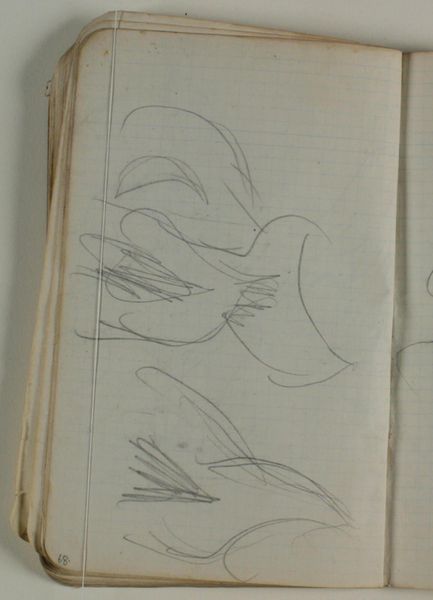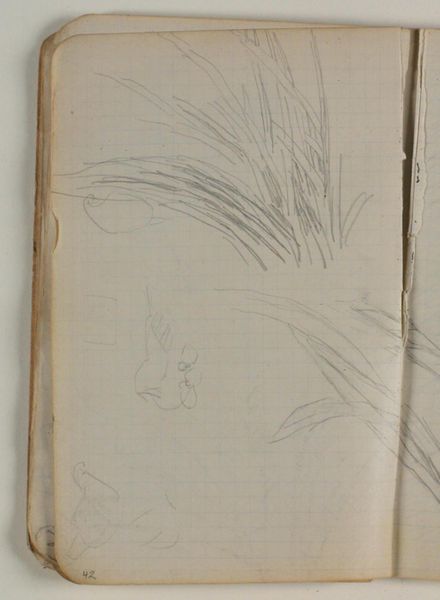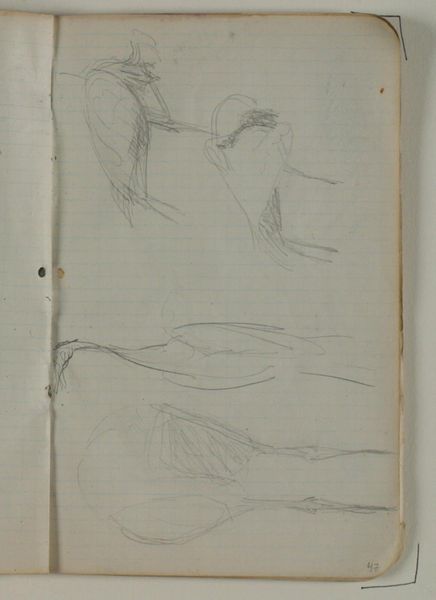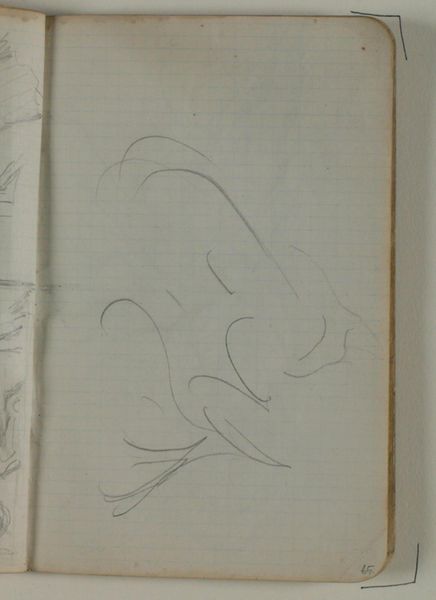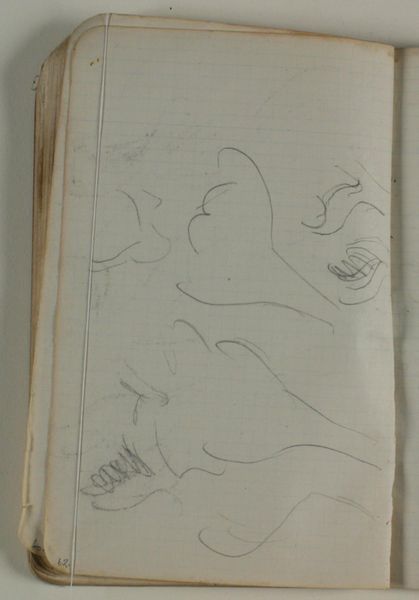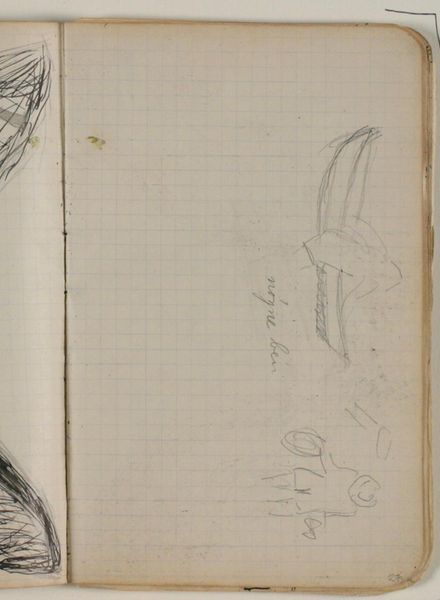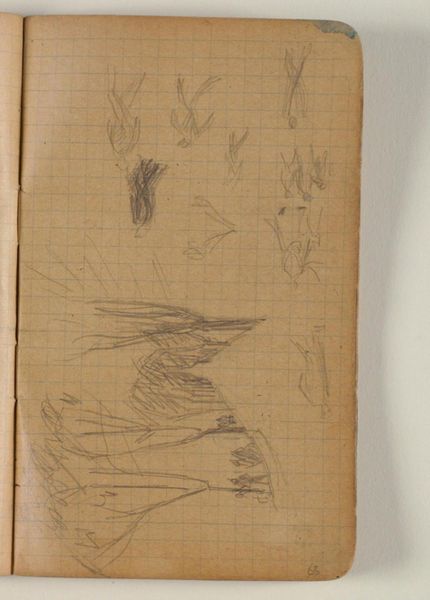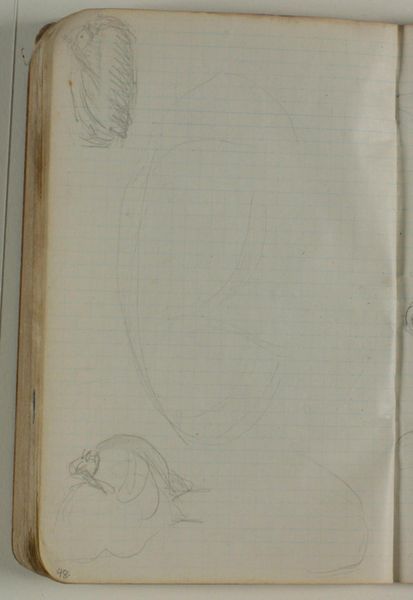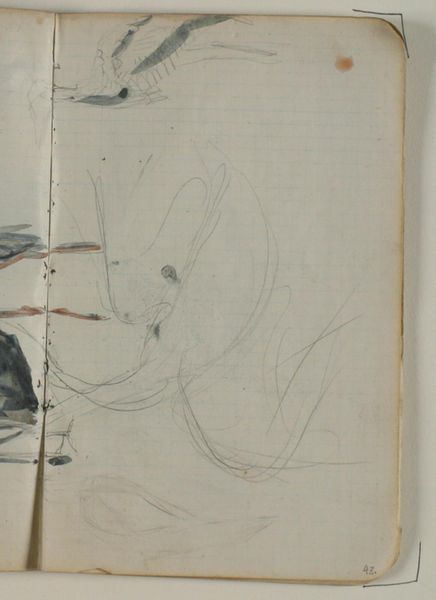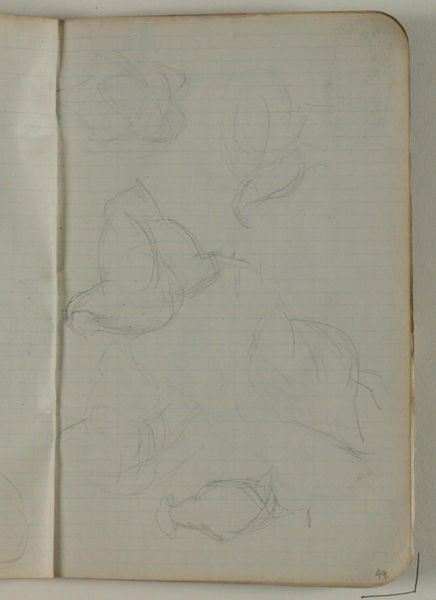
drawing, paper, pencil
#
drawing
#
landscape
#
paper
#
pencil
#
realism
Dimensions: 175 mm (height) x 110 mm (width) (bladmaal)
Editor: Here we have Niels Larsen Stevns' "Skitser af traner," created sometime between 1900 and 1905. It's a pencil drawing on paper, seemingly a page torn from a notebook. It feels incredibly immediate and raw. What can you tell me about this piece? Curator: Well, first, let's consider the material conditions of its making. A readily available notebook and pencil – tools of everyday life, not necessarily associated with "high art." This suggests a democratization of artistic practice, where the means of production are easily accessible. This disrupts a formal view of art creation, by including the banal aspect of 'making-do'. What does that suggest to you about the artist's intent? Editor: Maybe Stevns wanted to capture these cranes quickly, prioritizing the immediacy of the observation over the formality of a finished artwork? Was drawing more of an industrial function? Curator: Precisely. Think about the labor involved, too. Pencil drawings are quick and cheap to reproduce, yet allow for detailed rendering, serving commercial needs. So we should ask; How did this drawing circulate, how was it distributed? Editor: That’s interesting. I hadn’t thought about the potential commercial aspect of such a sketch. It feels so personal, like a private study. Curator: Consider then, where such sketches were made in the 1900s and distributed around the world. They become source material in many forms of art that may follow. Editor: So, looking at this piece as not just a representation of cranes, but as a material object with its own history and potential trajectory really changes my understanding of it. It really contextualises the intention of the production, more than just aesthetics. Curator: Exactly. By emphasizing the production conditions, distribution possibilities and material context of this seemingly simple sketch, we can unravel a complex network of meaning that exceeds traditional art historical interpretations.
Comments
No comments
Be the first to comment and join the conversation on the ultimate creative platform.
